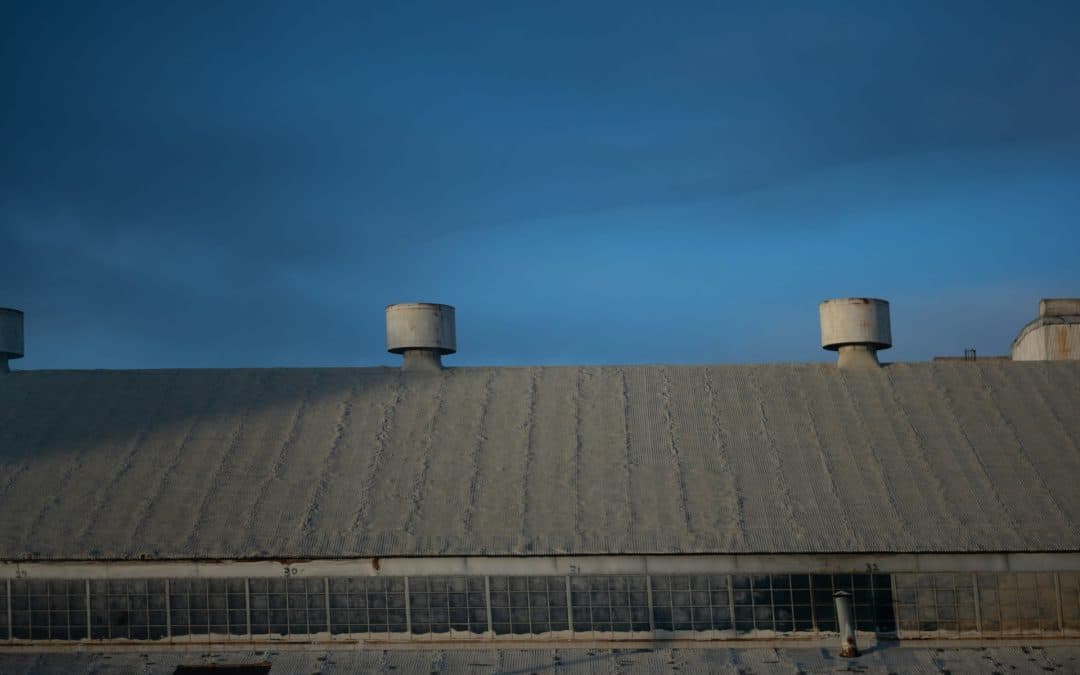Modified bitumen roofing is a popular choice for commercial buildings. It is known for its durability and strong resistance to weather extremes. However, like any roofing material, it is not free from issues. Over time, problems can develop that need attention. Understanding these issues and knowing how to address them is key to maintaining a long-lasting roof.
Commercial roofing issues can be costly if not handled properly. Small problems can quickly grow into major concerns, leading to expensive repairs or even a full roof replacement. Identifying common issues early can save money and ensure the safety of the building. This is why regular inspections and maintenance are so important.
Learning about modified bitumen roofing issues and solutions helps building owners and managers keep their roofs in top condition. This knowledge can prevent disruptions and costly repairs. In this article, we will explore the common problems found in modified bitumen roofs and provide solutions to keep them in excellent shape. With proper care and attention, a modified bitumen roof can last for many years, protecting your commercial property efficiently.
Understanding Modified Bitumen Roofing
Modified bitumen roofing is a type of asphalt roofing that is commonly used for flat or low-slope commercial roofs. It combines traditional roofing materials with modern polymer technology to improve durability. This roofing system is made up of multiple layers, including a base sheet, one or more reinforcement layers, and a cap sheet.
The base sheet serves as the foundation, often attached directly to the roof deck. The reinforcement layers can include materials like fiberglass or polyester, which help strengthen the roof and add flexibility. The cap sheet is the top layer, coated with granules to protect against UV rays and weather damage. These layers are bonded together using heat or adhesives, creating a strong, waterproof membrane.
Modified bitumen roofing is known for its excellent resistance to harsh weather conditions, including extreme heat, heavy rain, and strong winds. It also provides good protection against punctures and tears, making it a popular choice for commercial buildings. Despite its robustness, it’s important to understand the common issues that can affect this type of roofing.
Common Issues in Modified Bitumen Roofing
Even though modified bitumen roofing is durable, it can still face various issues over time. Here are some common problems:
- Blistering: Blisters are bubbles that form between layers of the roofing material. They occur when moisture gets trapped during installation or due to poor ventilation. Over time, blisters can break, leading to leaks.
- Cracking: Extreme temperatures can cause the roofing material to expand and contract. This thermal movement can lead to cracks in the surface, which may allow water to seep through and damage the underlying layers.
- Ponding Water: Flat or low-slope roofs can accumulate standing water if the drainage system is not working correctly. Ponding water can speed up wear and tear on roof materials and increase the likelihood of leaks.
- UV Damage: Despite the protective granules, prolonged exposure to the sun can degrade the roofing material. UV rays can cause the surface to become brittle and crack over time.
- Poor Installation: Improper installation is a significant cause of roofing issues. Mistakes like inadequate sealing of seams or incorrect layer bonding can lead to early roof failure.
- Punctures and Tears: Foot traffic, fallen branches, or construction activities can cause punctures and tears in the roofing material. These damages compromise the waterproofing ability of the roof.
Understanding these common issues helps property owners recognize the signs of trouble early. By addressing these problems promptly, they can prevent further damage and extend the life of their modified bitumen roofing.
Solutions for Addressing Common Roofing Issues
Addressing issues in modified bitumen roofing promptly can prevent bigger problems down the line. Here are some effective solutions for common problems:
- Repairing Blisters: To fix blisters, start by cutting the blister open and allowing it to dry out. Remove any moisture and use roofing cement to press the layers back together. Cover the repaired area with a patch of roofing material to seal it thoroughly.
- Fixing Cracks: Inspect the roof regularly for cracks, especially after weather changes. Use a high-quality roofing sealant to fill small cracks. For larger cracks, apply a reinforced fabric over the area, then coat it with roofing cement to ensure a solid seal.
- Improving Drainage: Ensure that your roof has a proper drainage system to prevent ponding water. Clean gutters and downspouts regularly. If needed, install additional drains or scuppers to facilitate water flow off the roof.
- Protecting from UV Damage: Apply a reflective roof coating to protect the surface from UV rays. These coatings can extend the lifespan of the roof by minimizing the effects of sun exposure.
- Ensuring Proper Installation: Hire experienced and certified contractors for your roofing projects. Proper installation is crucial and can prevent many issues from happening. Always verify the work quality and ensure correct installation techniques are used.
- Repairing Punctures and Tears: Inspect your roof for any punctures or tears. Clean the damaged area, apply roofing cement, and cover it with a patch of the same material, extending it several inches beyond the damage. Seal the edges of the patch thoroughly to prevent leaks.
By taking these steps, you can effectively manage and mitigate common problems in modified bitumen roofs, ensuring durability and longevity.
Tips for Maintaining Modified Bitumen Roofs
Maintaining your modified bitumen roof is crucial for long-term performance. Here are some practical tips to keep your roof in excellent shape:
- Regular Inspections: Schedule inspections at least twice a year, preferably in the spring and fall, to check for any signs of damage or wear and tear. Early detection can prevent minor problems from becoming major issues.
- Keep the Roof Clean: Remove debris like leaves, branches, and dirt from the roof surface regularly. Debris can trap moisture and cause damage over time. Use a soft-bristle broom or leaf blower for cleaning.
- Clean Gutters and Drains: Ensure that gutters and drains are free from obstructions. Blocked drainage systems can lead to water buildup, causing leaks and damage to the roofing material.
- Address Minor Issues Promptly: Don’t ignore small problems such as loose shingles or minor cracks. Address these issues quickly before they escalate into more significant damage.
- Trim Overhanging Branches: Cut back any tree branches that hang over your roof. This prevents debris from accumulating on the roof and reduces the risk of branches causing physical damage during storms.
- Monitor for Blisters and Cracks: Keep an eye out for blisters and cracks. If you notice any, act immediately to repair them. This reduces the risk of leaks and further damage.
- Apply Roof Coatings: Consider applying a reflective roof coating to protect against UV damage and extend the roof’s life. These coatings can also improve energy efficiency by reflecting sunlight.
By following these tips, you can help ensure that your modified bitumen roof remains in good condition, providing reliable protection for your commercial property.
Conclusion
Taking care of a modified bitumen roof involves understanding common issues and addressing them promptly. Regular maintenance is key to maximizing the lifespan and performance of your roof. From inspecting for blisters and cracks to cleaning gutters and trimming overhanging branches, each step contributes to the overall health of your roofing system.
Hiring professionals for repairs and maintenance can ensure that your roof is properly cared for. Experienced contractors bring the necessary expertise to handle any roofing issues effectively. They can also provide valuable advice on preventing future problems and ensuring your roof remains durable and efficient.
Investing time and effort in roof maintenance protects your commercial property and saves you money in the long run. Contact Mike Huddleston Roofing Systems today for expert assistance with your modified bitumen roof. Let us help you keep your roof in top shape with our professional commercial roofing services. Reach out to us now and schedule an inspection to safeguard your commercial property.

